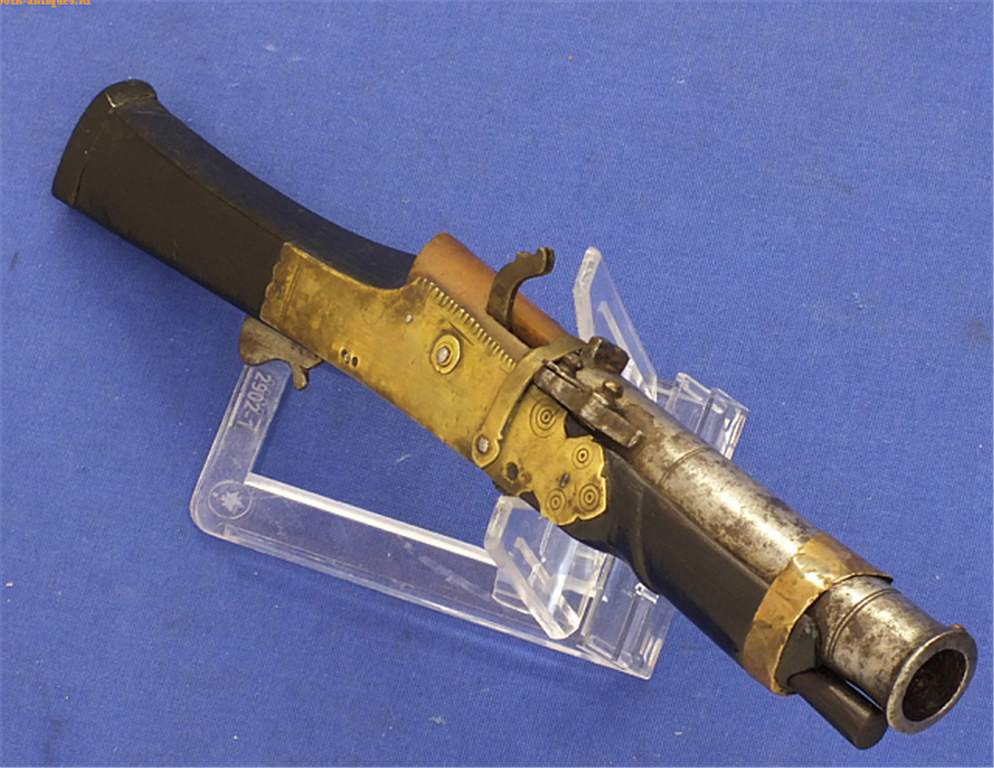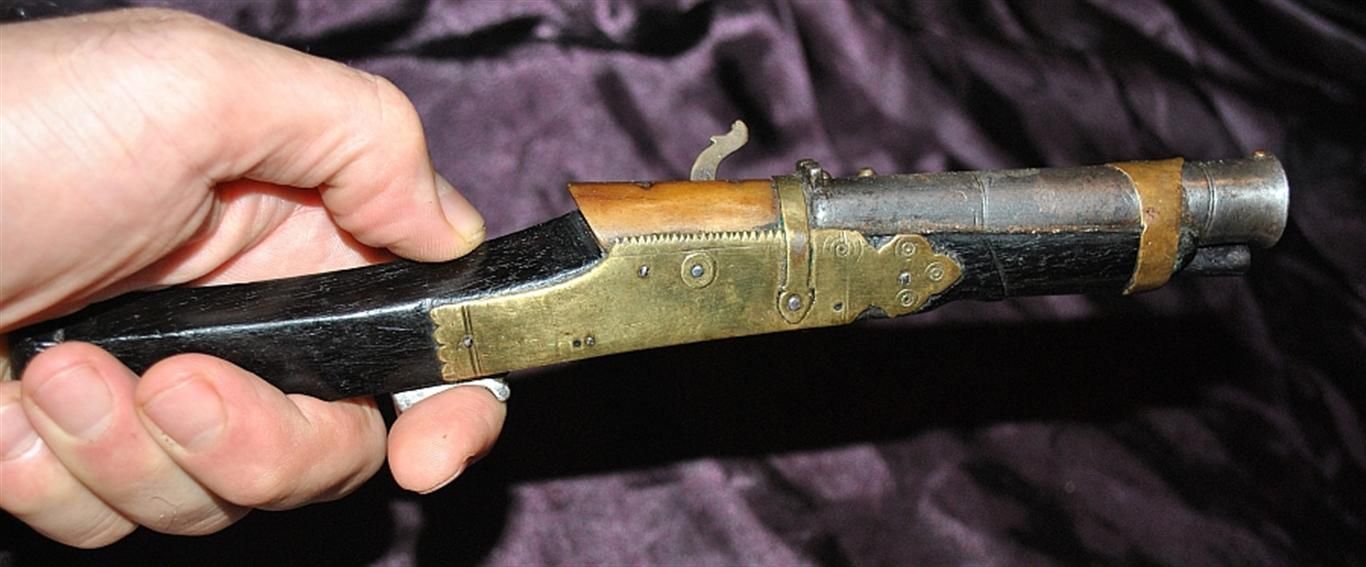Found here:
https://laststandonzombieisland.com/
http://i639.photobucket.com/albums/uu119/hawkeyetoo/matchlock-pistol-1700-1799.jpg
"16mm matchlock used in India by the British during the early 1700s, from the Royal Armouries collection."
"Described as follows:"
"The overall length of the gun is 420 mm, the barrel length being 245 mm. Weight: The weight of the gun is 0.75 kg.
Full stocked in a brown stained wood, carved with a ball butt that resembles a brass butt-cap. The iron barrel is round, tapering with a bulbous muzzle and mouldings with a dentated border. There is a similar moulding near the breech and a simple rear-sight. The lock mechanism is of typical Indian pattern with the trigger linked to the serpentine, all being set in a slot in the woodwork. On the side of the stock is a conical holder for a pricker and a ring that once held the pricker chain. Under the stock is a swivel and a plain steel ramrod."
https://laststandonzombieisland.com/
http://i639.photobucket.com/albums/uu119/hawkeyetoo/matchlock-pistol-1700-1799.jpg
"16mm matchlock used in India by the British during the early 1700s, from the Royal Armouries collection."
"Described as follows:"
"The overall length of the gun is 420 mm, the barrel length being 245 mm. Weight: The weight of the gun is 0.75 kg.
Full stocked in a brown stained wood, carved with a ball butt that resembles a brass butt-cap. The iron barrel is round, tapering with a bulbous muzzle and mouldings with a dentated border. There is a similar moulding near the breech and a simple rear-sight. The lock mechanism is of typical Indian pattern with the trigger linked to the serpentine, all being set in a slot in the woodwork. On the side of the stock is a conical holder for a pricker and a ring that once held the pricker chain. Under the stock is a swivel and a plain steel ramrod."
Last edited by a moderator:








